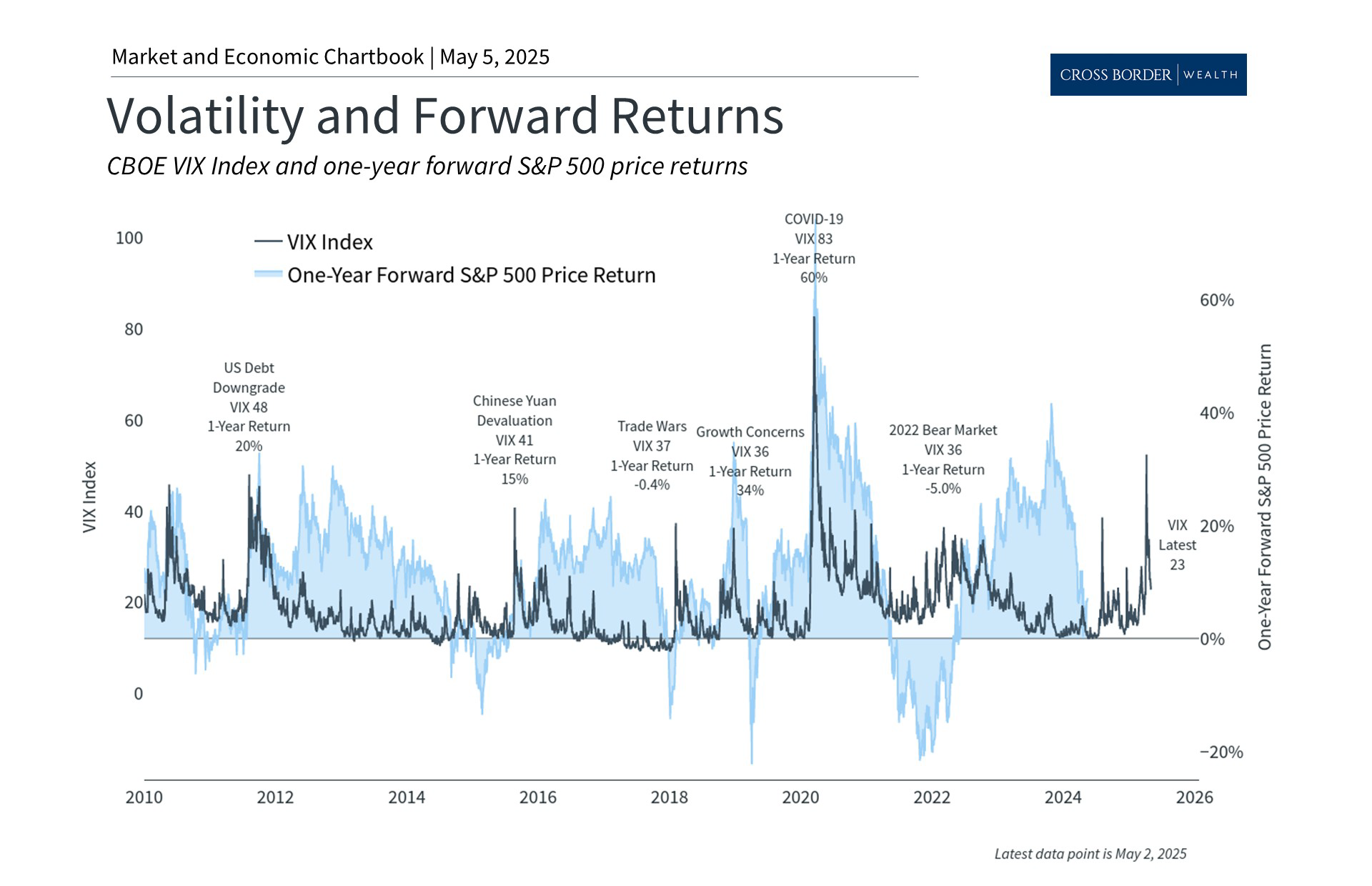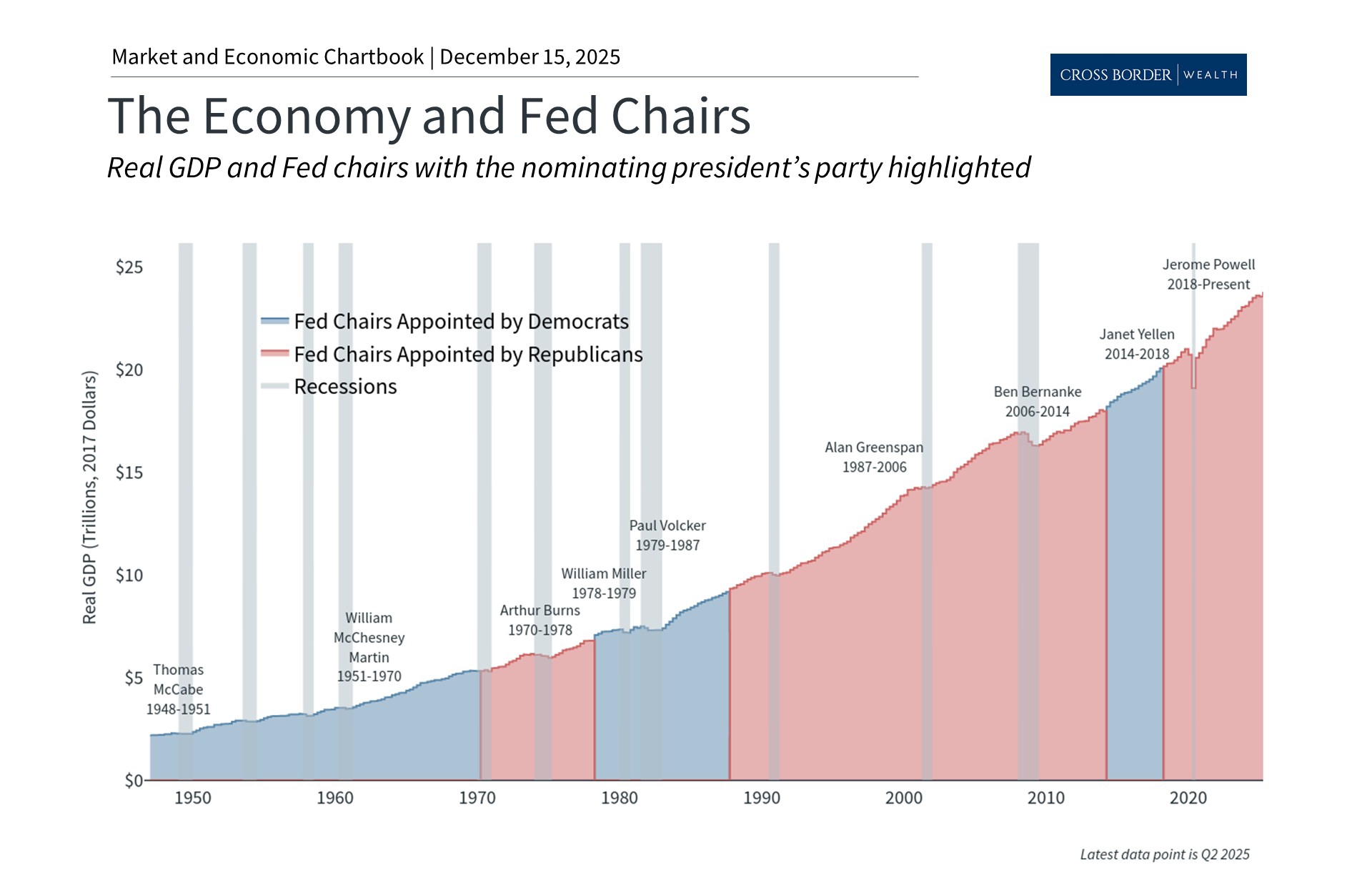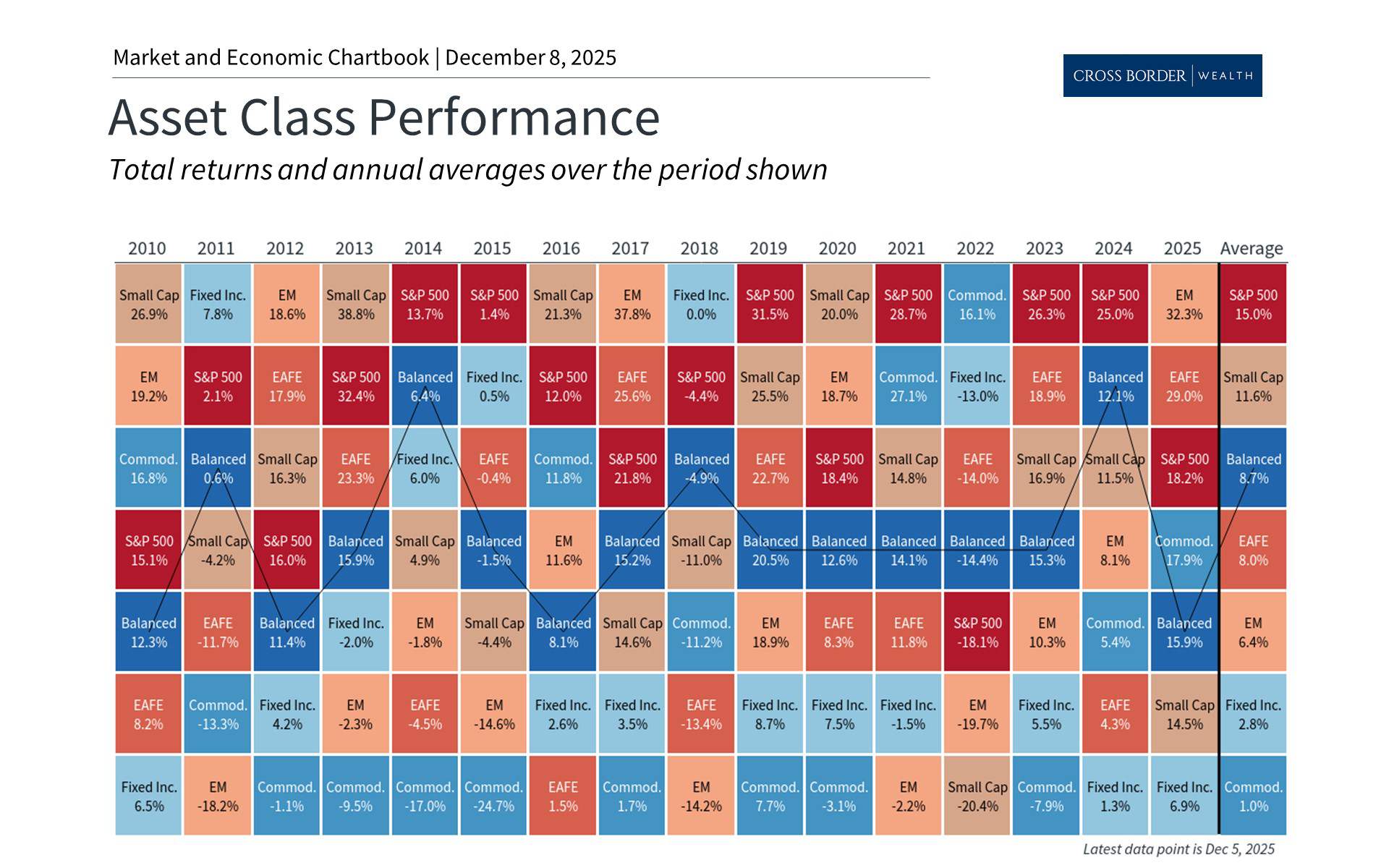Monthly Market Update for April 2025: Lessons After a Historic Month
- Market Insights
- 5 mins

Get investing insights for US-connected global citizens.
Book a free consultation with our cross-border advisors.
April was one of the most volatile months in history as markets reacted to new tariff announcements. However, even though the S&P 500 fell as much as 12% during the month, the index rebounded and closed within one percent of where it started.
Recent data also showed that the economy shrank slightly in the first quarter as companies stockpiled imported goods ahead of new tariffs. While bonds and international stocks were also volatile, they both contributed positively to diversified portfolios. This is yet another reminder of the importance of staying invested and diversified in times of uncertainty.
Lessons on staying invested after a volatile month
Once again, April demonstrated the importance of being prepared for market uncertainty. The month began with the White House’s April 2 tariff announcement on nearly all trading partners. These tariffs were far higher than investors had expected, leading to fears of rising inflation, a global economic slowdown, and a trade war. Stock markets reacted with the sharpest declines since the pandemic.
Stock market volatility jumped in April
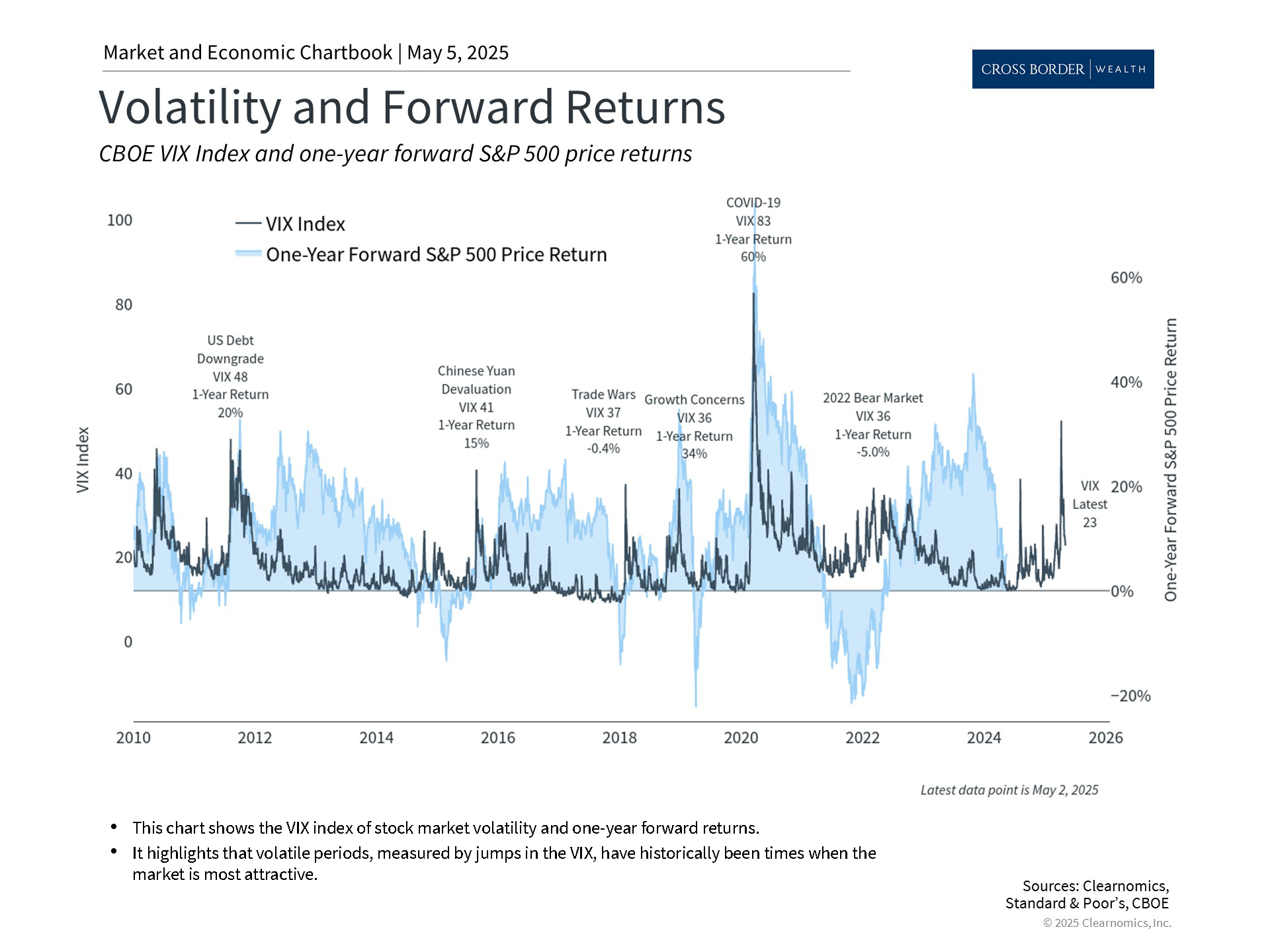
Past performance is not indicative of future results
The administration's decision just days later to implement a 90-day pause for most countries helped fuel a market recovery. Additional exemptions on tariffs with China, including on technology products, further calmed investors' nerves.
Despite significant swings throughout the month, major indices closed with only modest changes. Diversified portfolios also benefited from bond returns and a rally in international stocks. So, while the S&P 500 is down about 4.9% for the year with dividends, many balanced portfolios are closer to flat.
The accompanying chart shows that the VIX index, a key measure of market volatility, briefly crossed 50 for the first time since the pandemic. However, many of the largest declines during the month were followed by significant rebounds. This is a reminder that market swings can move in both directions, and trying to time these moves can often be counterproductive.
While markets have stabilized somewhat more recently, uncertainty remains and many of the drivers of April’s volatility will continue to be in focus. The situation around trade policy is still evolving, although the 90-day pause suggests that the worst-case scenarios may be less likely. Investors should expect that tariff headlines could continue to drive volatility in the near-term, even as markets adapt to the new trade landscape.
GDP declined in the first quarter
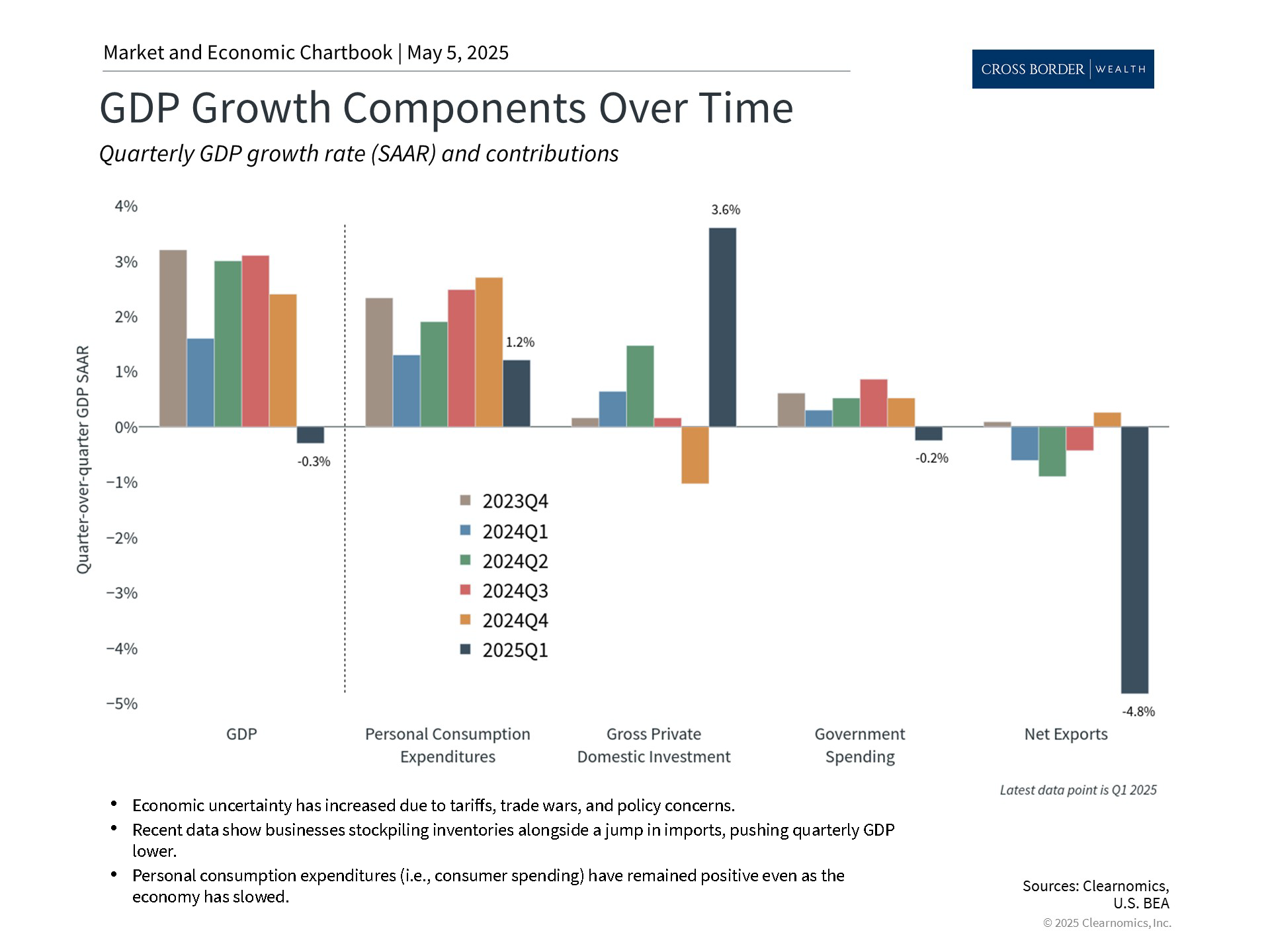
Past performance is not indicative of future results
One of the key concerns among investors is whether tariffs will drive inflation higher and growth lower. The latest economic reports show that the economy shrank slightly in the first quarter, with GDP declining by 0.3% over the period, the first contraction since early 2022. This is due almost entirely to trade as businesses accelerated their imports to stockpile inventory. Consumer spending slowed but remained positive. It’s important to note that these figures are only the first estimate of GDP and are subject to change.
As the accompanying chart shows, consumer spending has been a key driver of economic growth in recent years. The latest surveys suggest that consumers expect a rapid acceleration in prices over both the coming year and in the longer run, resulting in historically low consumer confidence. While this has not yet impacted consumer spending or inflation in a significant way, it could be an important factor in the coming months.
The mixed picture on economic growth and inflation also makes the Fed’s job more difficult. Not only does the central bank face challenging interest rate decisions in the coming months, but its independence was briefly called into question by the White House, driving further market uncertainty. At the moment, markets expect the Fed to cut rates about four times this year, possibly beginning in July.
These events also resulted in unusual bond market swings, although they ended up near where they started. The 10-year Treasury yield ended the month at 4.16%, while corporate bonds saw yields edge higher. Some investors worried about a flight from U.S. assets, especially with the U.S. dollar falling to multi-year lows.
Staying invested has historically been rewarded

Past performance is not indicative of future results
In the face of recent challenges, one investment principle remains clear: staying invested through periods of volatility has historically been an important path to long-term financial success. The accompanying chart demonstrates the potential cost of attempting to time the market every time a 2% decline (or worse) occurs. Since positive and negative days often occur at unpredictable times, exiting the market after negative days, even for a short period, can backfire. The temptation to time the market may be even greater in today's market and economic environment.
While increased volatility can be unsettling, it’s in times like these that focusing on your financial plan, portfolio construction, and areas of opportunity is most important. Market volatility often results in attractive valuations across many asset classes, offering potential opportunities for those in search of greater diversification and balance in their portfolios. The S&P 500, for instance, has seen a significant improvement in its price-to-earnings ratio this year.
Cross Border Wealth is a SEC-registered investment adviser which may only transact business in those jurisdictions in which it is registered or qualifies for an exemption or exclusion from registration requirements.
Cross Border Wealth may discuss and display charts, graphs, formulas, stock, and sector picks which are not intended to be used by themselves to determine which securities to buy or sell, or when to buy or sell them. This specific information is limited and should not be used on their own to make investment decisions.
All information provided in this article is for educational purposes only and does not intend to make an offer or solicitation for the sale or purchase of any specific securities, investment, or investment strategies. Please ensure to first consult with a qualified financial adviser and or tax professional. Further, please note that while said information has been obtained from known sources which are believed to be reliable, none of these are guaranteed.
